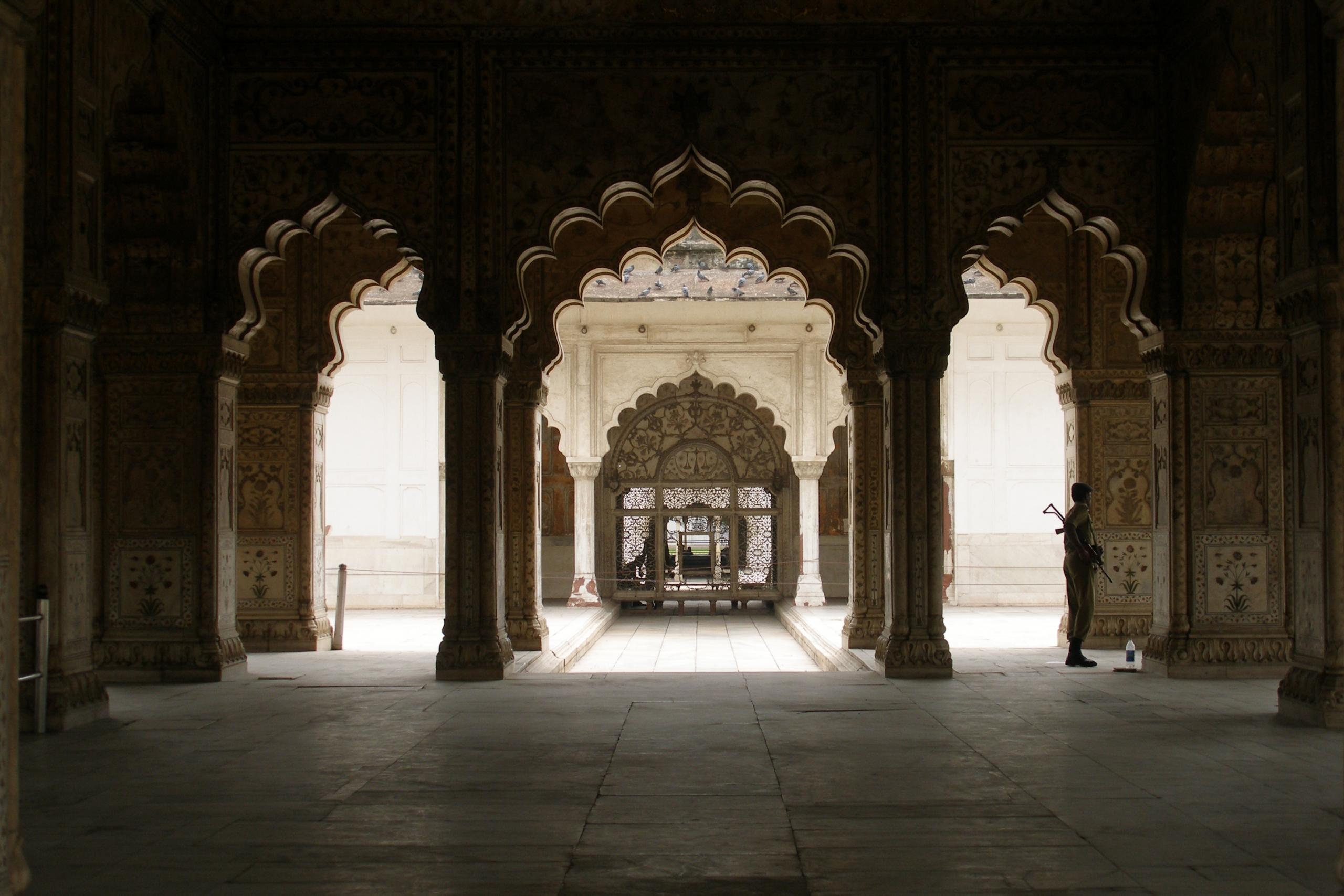The Red Fort Complex was constructed as the palace fort of Shahjahanabad, the new capital of India under the rule of Shah Jahan, the fifth Mughal Emperor. Known for its enormous red sandstone walls, it is part of the Red Fort Complex together with the Salimgarh, an earlier fort constructed in 1546 by Sher Shah Suri. The Nahr-i-Behisht (Stream of Paradise), a continuous water channel, connects a row of pavilions that make up the private residences.
The Red Fort is thought to symbolize the height of Mughal inventiveness, which Shah Jahan elevated to a new degree of sophistication. The palace's layout is modeled after Islamic structures, although each pavilion has Mughal-era architectural features that combine Hindu, Timurid, and Persian customs. Subsequent structures and gardens in Rajasthan, Delhi, Agra, and other places were greatly impacted by the Red Fort's inventive planning and architectural style, which also included the garden design.
Discover the romantic history of the Taj Mahal.

Red Fort History

The Red Fort was constructed as the bastion of Shahjahanabad, the new capital of Mughal emperor Shah Jahan, located in Delhi. One of the most recognizable images of India's Independence Day festivities and anti-colonial resistance is still the Red Fort. Every Independence Day since 1947, the prime minister has raised the national flag here and given a speech to the people from the rampart next to the Lahori Gate, which serves as the fort's main public entrance.
Structure of the Fort
A total of 254.67 acres make up the Red Fort. The defensive wall that surrounds the fort is 2.41 kilometers long. The walls on either side of the river are 18 meters high, while the walls on the city side are 33 meters high. In the northeastern part of the medieval city of Shahjahanabad, the fort rises above a broad, dry moat. The "Chatta Chowk," a covered street surrounded by arched cells that formerly housed Delhi's finest skilled jewellers, carpet makers, weavers, and goldsmiths, is where the main entrance to the fort, known as the Lahori Gate, opens. The ladies of the Mughal court used this covered walkway, often called the "Meena Bazaar," as a shopping center. A short distance from the "Chatta Chowk" is the "Naubat Khana," also known as the Drum House. From the "Naubat Khana," the musicians would perform for the emperor, and this was where the arrival of princesses and other members of the royal family was announced.
Peek into the history of the Gateway of India and its importance for the British Empire.
The magnificent Delhi Gate, which resembles the main gate, is located in the southern part of the fort. The Red Fort is home to all of the Mughal dynasty's relics, such as the mosque (Moti Masjid), elaborately landscaped gardens, marble palaces with domed and arched ceilings, and halls of public and private audience (Diwan-i-Am and Diwan-i-Khas). The monarch had secret meetings at the "Diwan-i-Khas," while he would hear complaints from his subjects at the "Diwan-i-Am."
The famed Pearl Mosque, constructed by Aurangzeb, the Shahi Burj (Shah Jahan's private working space), and the Royal Bath, or "Hammam," are also located within the fort. The wives and mistresses of the Emperor resided at the "Rang Mahal," also known as the Palace of Colors.
The renowned architect Ustad Ahmad Lahauri, who is thought to have constructed the renowned Taj Mahal, constructed the Red Fort. The fort is regarded as the height of Mughal ingenuity and as a unique construction. Many of the buildings at Red Fort are outstanding examples of Mughal architecture, which blends Persian and Timurid architectural elements, and Islamic architectural style.
Trace India's spiritual roots with a history of the Khajuraho temples.
The Red Fort is well-known for the Stream of Paradise, a water channel, and its gardens, the majority of which were destroyed by the British. Numerous pavilions in the Mughal architectural style are connected by this water channel. Many buildings and gardens in the post-independence era were inspired by this style of design. Additionally, the fort was adorned with priceless artefacts and floral arrangements. The Kohinoor diamond is alleged to have been a component of the grandiose interior decorating.
Structures within the Red Fort
The Red Fort still has a large number of historic buildings, some of which are notable and are mentioned here, even though up to 66% of the fort's structures were either completely destroyed or severely damaged.
Learn the fascinating History of Charminar, Hyderabad's crowning jewel.

- Mumtaz Mahal: One of the six palaces inside the fort, Mumtaz Mahal was located in the women's quarters (zenana). The Stream of Paradise united all of these palaces, which were constructed along the Yamuna River's banks. White marble was used in the construction of the Mumtaz Mahal, and floral motifs were added for adornment. It was used as a detention camp when Britain ruled. The Red Fort Archaeological Museum is now housed inside this magnificent structure.
- Khas Mahal: The emperor's personal house was the Khas Mahal. The sitting room, the sleeping chamber, and the chamber of telling beads were the three sections of the palace. The palace's ceiling was gilded, and white marble and floral decorations were used throughout. The "Muthamman Burj," a tower from which the emperor would speak to his subjects or merely gesture to them to recognize their presence, was linked to Khas Mahal.
Travel back in time to the majestic Konark Sun Temple in Odisha.
- Rang Mahal: Constructed to shelter the emperor's lovers and wives, the Rang Mahal means "Palace of Colors" in translation. As the name implies, vivid paint jobs and showy embellishments were used to give the palace a colourful appearance. The palace's central feature was a marble basin that was intended to receive water from the Stream of Paradise. The women used a cellar beneath the palace as a place to cool themselves in the summer.
- Hira Mahal: Constructed in 1842 by Bahadur Shah II, the Hira Mahal is likely among the final constructions undertaken by a Mughal ruler prior to the British incursion. Despite being just a pavilion, it has a fascinating legend attached to it. This precise spot is said to be where Shah Jahan concealed a diamond that was supposed to be given to his first bride. It is thought that the undiscovered diamond is even more valuable than the well-known Kohinoor.
- Moti Masjid: Constructed by Aurangzeb for his exclusive usage, Moti Masjid literally means "Pearl Mosque." It's interesting to note that the Zenana residents also frequented the mosque. Moti Masjid is a white marble structure with three domes and three arches.
- Hammam: The emperors used the Hammam, which is essentially a building that housed their baths. The dressing room stood on the eastern apartment. The taps in the flat on the west side used to run hot water. It's reported that baths were taken with fragrant rose water. White marble and floral patterns adorned the inside of Hammam.
Discover the towering glory that is the Qutab Minar through a historical lens.
Importance of Lal Qila (Red Fort)
The Red Fort, one of India's most well-known historical landmarks and a top tourist destination in Delhi is rich in history and legacy. In 2007, it was designated as a UNESCO World Heritage Site. This amazing edifice is currently under the protection and care of the Archaeological Survey of India.
The first Mughal Emperor began the planning and design of the Red Fort in 1526 AD, and Shah Jahan combined Islamic, Persian, Timurid, and Hindu traditions to bring it to a magnificent refinement. The Red Fort's architecture marks the conclusion of this architectural growth. The Red Fort's inventive garden design, building component architecture, and planning layouts had a significant impact on succeeding structures and landscapes in Rajasthan, Delhi, Agra, and other places. Events that took place at the Red Fort had a significant influence on the geo-cultural area.
The Yamuna River flows alongside the Red Fort, which was formerly called Quila-e-Mubarak or the Blessed Fort. The Yamuna River supplied water for the moats that surrounded the fort. Numerous museums now have an array of priceless artefacts on exhibit at this monument. On Independence Day, the Indian Prime Minister hoists the country's flag here each year.
Since Shah Jahan's time, the Red Fort has stood as a symbol of national strength and political power. It has also seen India's history shift to British dominion and hosted the first and ongoing celebration of Indian independence. Thus, the Red Fort Complex has served as the site of significant events that have shaped regional identity and had a broad influence on the geo-cultural region.
Tourist Information About Red Fort
Red Fort is visited by many tourists for the significant historical relevance that it holds. But other than the red sandstone and the mighty building of medieval times, there is another attraction that brings the tourists to the Fort - the Light and Sound Show. The show, held every evening except Mondays, is a one-hour fest of lights and sounds which takes place inside the premises of the Fort. There's no better way to learn about the history of the Fort.
Revel in the history of the Ajanta Caves and celebrate India's cultural diversity.

The shows are both in English and Hindi at different times:
- Hindi- 7:30 PM - 8:30 PM
- English- 9:00 PM - 10:00 PM
- Tickets: Weekdays - INR 60 for adults and INR 20 for children
- Weekends and Government Holidays - INR 80 for adults and INR 30 for children
Marvel at India's architectural glory through a history of the Ellora Caves.
Timings
Except for Mondays, visitors can visit the Red Fort on any day of the week. The timings for Red Fort, Delhi are from 9.30 a.m. to 4.30 p.m. The best time to visit is between October and February when Delhi is at its most beautiful. In order to enjoy the sights and sounds of the Red Fort, especially, those interested in capturing some historical Red Fort photos, or the light and sound show, which is available in 2 languages, Hindi and English, you can check the timings and tickets online for the Red Fort, Delhi.















